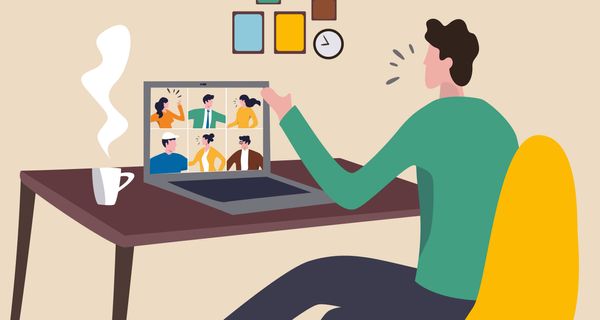Many of us who used to work in offices and are now working from home have been able to enjoy a little flexibility since the virus. However, research suggests a lot of employees haven been working harder than ever this year, without a fixed start and end point to our day or the natural buffer of a commute.
The darker evenings have always been a trigger for those with seasonal affective disorder, with lockdown only exacerbating our need to get out during daylight hours, by putting an end to brightly-lit evenings in pubs, restaurants, and even gyms. The coming winter has many nine-to-fivers feeling trapped.
But there is a way to get the outdoors time we all deserve. From the confusing haze of our ‘new normal’ comes the possibility of a two-hour lunch break – allowing employees to, literally, see the light. We only have to ask for it.

Asking for a two-hour lunch break may feel like a difficult conversation to have – but there’s a way to broach the issue that’s fair on employee and employer, says career coach Erica Wolfe-Murray, author of Simple Tips Smart Ideas.
“In an office you’d get up and go to the loo, get a coffee, have a chat. We’re missing all of those things,” says Wolfe-Murray, who insists getting outside during daylight hours is essential. “Your health needs it, your mind needs it, your eyes need it. You shouldn’t be sitting look at a computer screen for three hours on the trot. You should be up [from your desk] every 25 or 35 minutes.”
How to make the case for a longer break
First of all, check your contract, suggests Wolfe-Murray – most will have a one-hour lunch break written into the terms. At the very least, take that every day as a starting point.
When negotiating a longer midday break, Wolfe-Murray recommends putting yourself in your employer’s position to increase the chances of having your request green-lit. “You should think: If I had to run a company and have responsibility for everybody’s salaries and safety, what would be one of the ways that I would like to be approached?” she suggests. “I’d also ask around and find out who else would like that flexibility, too.”
Approach your boss with options. “Don’t put somebody on the spot in a difficult way where they’ve got to give a yes/no answer,” she says. “Say, maybe I could do this three days a week. Or, could I have a two-hour lunch break on this particular day so I can go out and do running?”
Get stuck into the specifics with your request, she recommends. Marking time on the calendar, as you would for a meeting, is another good way to request this type of flexibility while assuring your boss you are being professional, too.
Why it’s really worth asking
Emma Hull, 25, a marketer based in Cardiff, has been reaping the benefits of her firm’s new flexible working hours policy which began in August. Hull works core hours of 10am-6pm, but told she could make up the rest of her day either side of that to allow for a longer lunch break
“Two hour lunch breaks are great. I much prefer getting out in the day rather than the evening, especially now that it’s winter and dark and gloomy by 5pm – I feel like a mushroom, never seeing daylight!” she tells HuffPost UK.
“An hour is great, but I often found I’d rush a walk, or not take as long as I wanted, and then I was never able to spend time cooking a nice lunch, or having 10 minutes to just sit down and chill. It was always straight back to work.”
Her HR manager agreed to the company-wide move after a few employees made the request. “We felt like we weren’t leaving the house, especially with remote working… going all day without seeing anyone, speaking to anyone or seeing the outdoors,” says Hull, who says her afternoons are more productive following an extended break. “It feels like I’m starting from scratch and I skip the whole ‘afternoon slump’.”
Wolfe-Murray believes that “every boss should be open to flexibility right now,” and recommends going to HR if yours “isn’t that sort of person.” Ultimately, she says, “the really important thing is not how many hours you spend at your desk, but whether you’re achieving the output you need.
“If you need a two-hour lunch break to go and do something, of course you’re going to come back fresher in the afternoon. What for me is really important is to ask the question: when do you work best?”
Use your strengths to your advantage, she says. “If you work better first thing in the morning, request a morning deadline, rather than end-of-day. If you’re an owl, rather than a lark, and prefer evening work, request a deadline at night.”
Her message? “Do whatever you can to get the time outdoors you need. It’s important that you don’t just work straight through and do take time out.”




